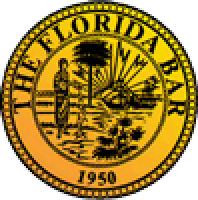- Call Today: (904) 438-8082 Tap Here to Call Us
How Weather Conditions Affect Liability in Florida Car Accidents
Introduction
Weather conditions can play a significant role in car accidents, but drivers are still responsible for maintaining control of their vehicles, even in poor weather. Rain, fog, and strong winds can reduce visibility and road traction, increasing the risk of crashes. In Florida, determining liability in weather-related accidents depends on whether a driver acted reasonably under the conditions.
This guide explains how different weather conditions impact liability in car accidents, what evidence can help prove fault, and how victims can seek compensation.
Common Weather Conditions That Contribute to Car Accidents
Several weather conditions frequently contribute to accidents in Florida, including:
- Heavy rain and wet roads causing hydroplaning
- Fog reducing visibility and increasing reaction times
- High winds making it difficult to maintain control of a vehicle
- Flooded streets leading to stalled vehicles and loss of traction
- Bright sunlight causing glare and temporary vision impairment
While these conditions make driving more dangerous, drivers are still expected to adjust their speed and behavior to reduce the risk of accidents.
Who Is Liable in a Weather-Related Car Accident?
In most cases, liability is determined based on negligence, meaning a driver can still be held responsible even if bad weather played a role in the crash.
Driver Negligence in Poor Weather
A driver may be found at fault if they failed to:
- Reduce speed during heavy rain or fog
- Turn on headlights when visibility was low
- Maintain a safe following distance on wet roads
- Use windshield wipers and defoggers properly
- Avoid flooded or unsafe roads when alternative routes were available
If a driver was speeding, following too closely, or failing to take precautions, they could be held liable for an accident, even if the weather was a contributing factor.
Comparative Negligence in Weather-Related Accidents
Florida follows a modified comparative negligence system, which means that accident victims can still recover compensation as long as they were not more than 50 percent at fault.
For example:
- If a driver was going too fast on a rainy highway and rear-ended another vehicle, they may be found 80 percent at fault.
- If the other driver had malfunctioning brake lights, they may be assigned 20 percent of the blame.
- If damages total $50,000, the rear-ended driver would receive 80 percent of the compensation, or $40,000.
If the injured driver is found to be more than 50 percent at fault, they may not be able to recover damages.
How to Prove Liability in a Weather-Related Accident
Since insurance companies often try to blame bad weather instead of their policyholder’s negligence, gathering strong evidence is crucial. Key pieces of evidence include:
- Police reports noting road and weather conditions at the time of the crash
- Traffic camera or dashcam footage showing driver behavior before the accident
- Eyewitness statements describing unsafe driving
- Skid marks, impact points, and vehicle damage assessments
- Weather reports verifying conditions such as heavy rain, fog, or high winds
This evidence can help prove that the at-fault driver failed to take reasonable precautions despite hazardous conditions.
Steps to Take After a Weather-Related Car Accident
If you are involved in a car accident caused by bad weather, taking the following steps can protect your legal rights and strengthen your claim:
- Call the police and ensure an accident report is filed, noting the weather conditions.
- Take photos of the accident scene, including road conditions, vehicle damage, and any traffic signs or signals.
- Get contact information from any witnesses who can verify how the accident happened.
- Seek medical attention, even if injuries seem minor, to document any pain or symptoms.
- Notify your insurance company but avoid admitting fault or speculating about the cause of the accident.
- Consult a personal injury attorney to evaluate your claim and handle negotiations with insurers.
What Compensation Can You Recover After a Weather-Related Accident?
Victims of weather-related accidents may be entitled to compensation for:
- Medical expenses, including emergency care, rehabilitation, and ongoing treatment
- Lost wages if the injury prevents them from working
- Property damage to repair or replace a vehicle
- Pain and suffering, including emotional distress and reduced quality of life
If the at-fault driver was reckless, such as by speeding in heavy rain or failing to maintain their brakes, punitive damages may also be awarded.
How a Car Accident Attorney Can Help
Insurance companies often try to avoid paying full compensation by blaming bad weather instead of driver negligence. An attorney can:
- Investigate the accident to prove the other driver’s responsibility
- Work with accident reconstruction experts to analyze road and weather conditions
- Negotiate with insurance companies to secure fair compensation
- Represent victims in court if a settlement cannot be reached
At Bonderud Law, we help accident victims fight for the compensation they deserve, even in complex cases involving weather-related crashes. If you were injured in an accident, contact us today for a free consultation.
Conclusion
While bad weather can increase the risk of car accidents, drivers are still responsible for operating their vehicles safely. Failing to adjust to road and weather conditions can lead to liability, even if the accident was caused in part by rain, fog, or high winds.
If you have been injured in a weather-related accident, gathering strong evidence and consulting with an experienced attorney can help you recover the compensation you deserve.











